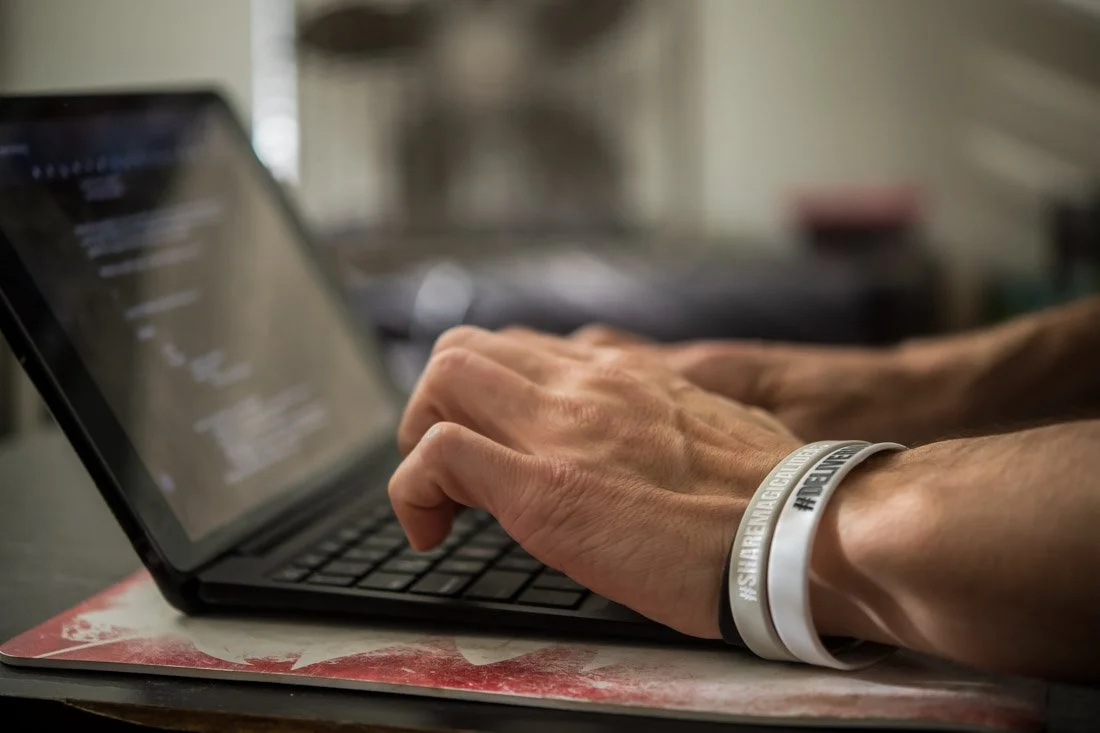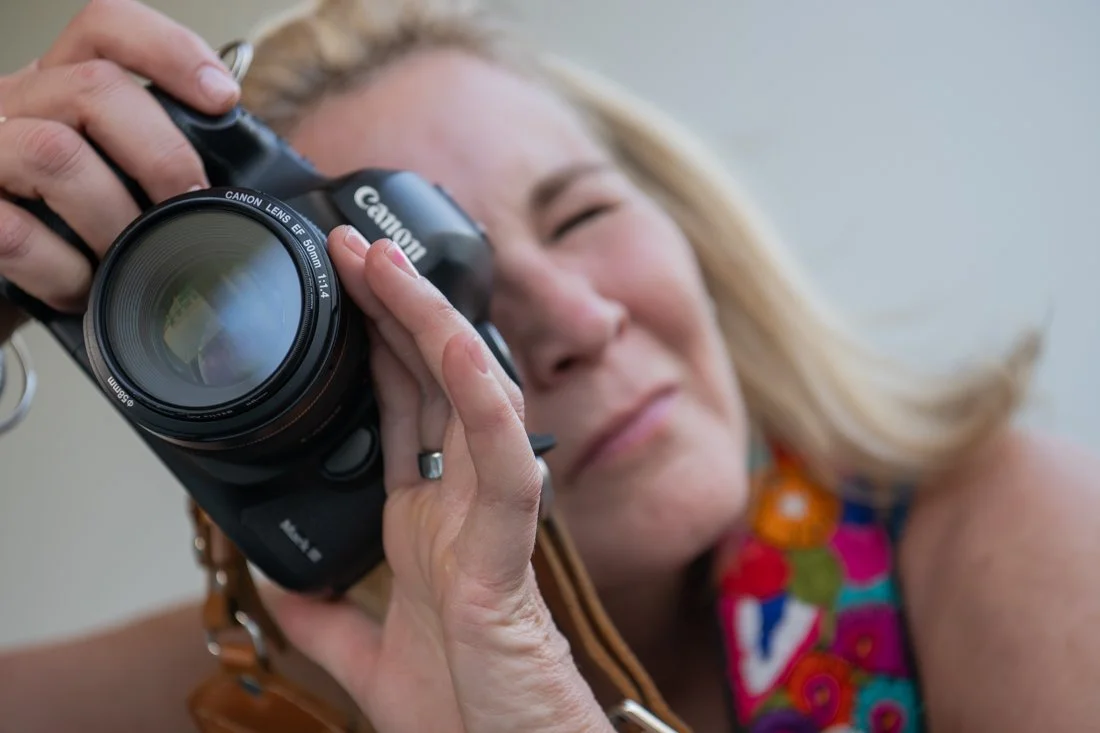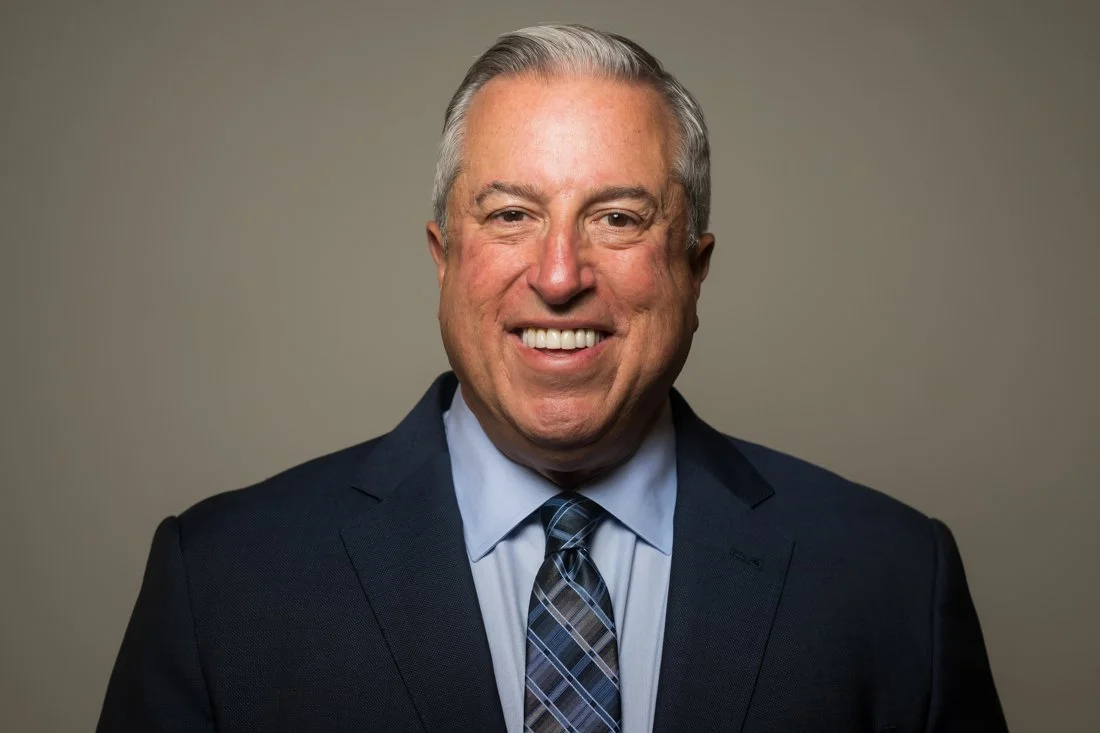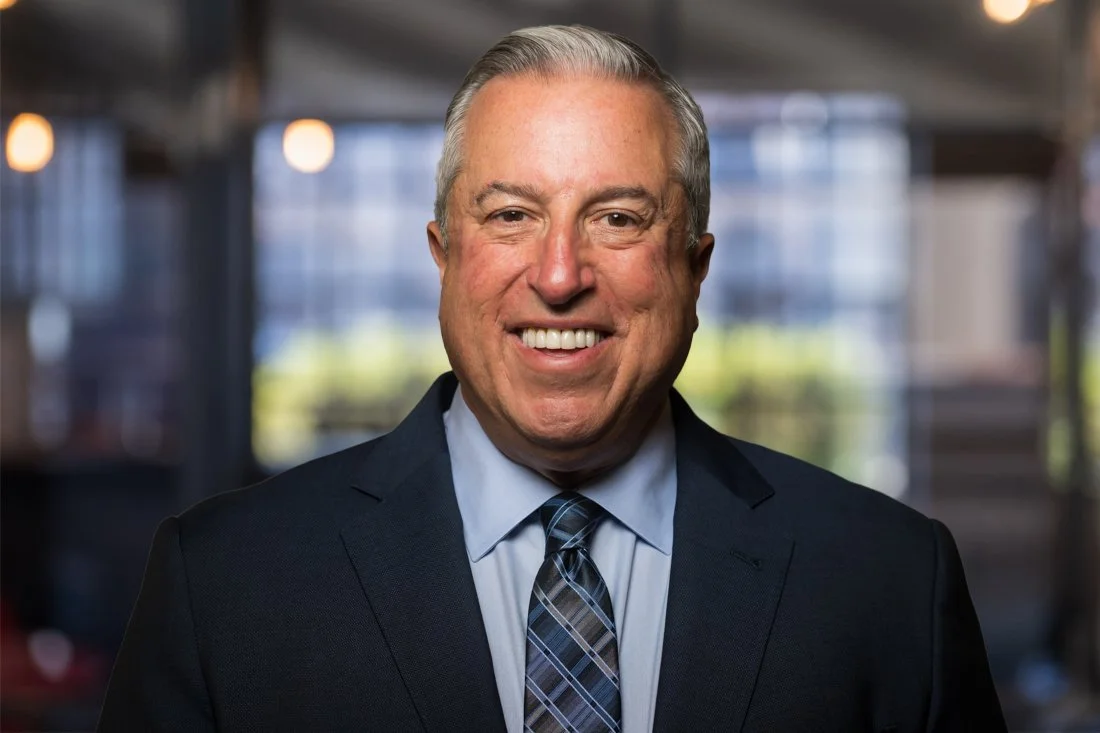Is your Studio Headshot Helping or Hurting Your Brand?
You think that a perfectly lit, airbrushed studio headshot against a seamless background is the epitome of professional excellence, don't you?
The gold standard.
It’s the image that says, "I've arrived."
Actually, it's the epitome of "meh."
And I'm not saying this to trash studio headshots.
I was a headshot guy for years. Tape on the floor, lights precisely angled, guiding client after client through the process. I photographed thousands of faces in those setups. I get it — there's a simplicity, a neatness, a professionalism to these images.
And there absolutely is a time and place for those photos.
But, what about if you're a business owner who’s the face of your brand, looking to create unmistakable curbside appeal and stand out amongst a sea of sameness?
If you want your profile photo - the front door to your entire online presence to shout "market of one" instead of "commodity,” then, for that purpose, this is neither.
It’s not the Studio. It's the Signal.
Let's be clear: the studio portrait isn't the villain.
In fact, for teams spread out all over the world, it's often the most efficient and practical way to acquire high-quality, consistent visuals to share on the About page, and in LinkedIn profiles.
The real issue?
It's how that image, straight out the box, functions in a world where every visual cue matters. If your primary photo is a clean studio shot, it's sending a very specific, and often, very limiting, message.
That blank background isn’t doing you any favors to help you stand out and highlight your personality and essence written on your face.
Think of it like a storefront window. You could have a beautifully clean window. But if it's empty, or just has a plain white sheet behind it, what does it tell you about the business inside?
Nothing.
It communicates "generic."
Your studio headshot, used alone, risks being that empty window—missing the opportunity to draw people in, spark curiosity, and hint at the rich and valuable experience beyond the glass.
Missing Your "Gourmet" Story
Having only a blank background, studio-based headshot as your profile photo and About page image is like trying to sell a fancy schmancy dining experience with a photograph of a fast-food hamburger - without all the trimmings, no less.
Oh sure, it’s technically "food," and it's certainly consistent in every location you purchase one, but it communicates absolutely nothing about the unique ingredients, the skilled chef, the ambiance, or the transformative experience you're truly offering.
It doesn’t pop.
Think about it: when was the last time you chose a premium restaurant based on a photo that could have been taken at a fast-food chain?
Ultimately, context writes the price tag, and a studio photo has zero context.
This matters because your brain processes images 60,000 times faster than text. Within 50 milliseconds of seeing your headshot, people have formed a judgment about your credibility, your value, and whether you're worth their time.
That pristine studio backdrop, used alone, risks sending the wrong signals:
Zero differentiation: You blend into the background noise.
No context clues: There's nothing to suggest your unique expertise or approach.
Commodity pricing: If you look generic, you'll be priced generic.
Forgettable factor: Nothing about the image creates a visually sticky first impression.
Meanwhile, 67% of consumers say the quality of an image is "very important" in their selection process.
But "quality" doesn't mean "sterile"—it means meaningful. It means images that visually allude to your unique value and invite deeper engagement.
The Power of the “blurry” background
Here's where the psychology gets interesting, and where we unlock the true power of "curbside appeal" for your personal brand.
When your headshot features an environment that's just out of focus behind you, it's like a master chef presenting their signature gourmet burger.
You—your face, your expression, your unique presence—are in razor-sharp focus. But behind you, the subtle, blurred hints of your world: the bookshelf filled with knowledge you impart, the decor of a co-working space in which you work, a stage where you deliver transformation, the whiteboard covered in your frameworks.
This isn't just a prettier picture. It's strategic psychology aimed at enhancing your curbside appeal:
The "Spotlight" Effect: Your brain prioritizes what's sharp and clear. The blurred background acts as a visual spotlight, making you the undeniable centerpiece while preventing any clutter from stealing attention. This ensures your unique expression is the star of the frame.
Contextual Storytelling: Unlike a blank studio background, an out-of-focus environment provides just enough visual information to hint at your expertise. It's the subtle glimpse of the kitchen behind the perfectly plated dish—it anchors your professional identity in a tangible, intriguing environment. This subtly tells your story before words are read.
Premium Perception: A sharp subject against a softly blurred background creates depth and dimensionality, qualities associated with high-end photography and intentional artistic choices. This subconsciously communicates higher investment in quality and attention to detail, elevating how you are seen by those you serve.
The Value Story Viewers Tell Themselves: People infer value from context before content. That blurred environment lets viewers write a premium story about you before you open your mouth. The brain assesses your value based on the visual cues you provide. This draws them further into your world.
The "Cut-Out" Strategy
This approach works magically for experts.
For businesses with teams spread out over the country and the world that can't meet in one place for a session, you can still leverage studio efficiency. Rather than simply keep the basic background, use it as a way to get cut out and used in more creative ways.
So yes, get initially photographed on a blank background:
But intend to have a designer replace it with a background image that's on brand and out of focus:
As an added bonus, once the image is liberated from that background, it can now be placed on any graphic, anywhere, for a variety of marketing and promotional purposes, like this social post used by one of my clients:
This is about creating a flexible visual asset.
Your unique expression and presence in the foreground, with just a hint of the "world" or "brand" in the background. It's about designing your visual first impression to communicate depth and specificity in order to help you and your team members stand out in a noisy online landscape.
Where This Shows Up for Experts and Businesses
Picture a luxury consulting firm where every partner's photo shows them in sterile, identical studio lighting.
Now imagine the same firm where each expert is photographed and then placed in their element—one in a boardroom mid-strategy session, another at a whiteboard sketching frameworks, a third reviewing data with subtle charts blurred behind them.
Which firm feels more premium? Which one would you trust with a six-figure engagement?
The environmental approach doesn't just look different—it signals:
Authenticity: You're a real person doing real work.
Competence: You have actual environments where you create results.
Investment: You care enough about your presentation to be intentional.
Context: Viewers understand immediately what you do and where you operate.
This strategic use of background transforms a simple headshot into a powerful piece of visual communication that enhances your curbside appeal and tells a compelling story, highlighting the personality and essence of the person in the photo.
Which is what you want to do when looking to create an initial pattern interrupt to spark connection with an audience of potential buyers, after all.
The Check-In Question
Are you ready for your headshot to do more than just exist? What if it could actively attract your next premium client?
Your visual presence should be the gourmet presentation your expertise deserves, not the fast-food photo that makes you forgettable.
What story is your current headshot telling about your value? And more importantly—is it the story you want your next premium client to believe?
Ready to transform your headshot from "meh" to magical? Let's talk about building visuals that demand attention. Book a Visual Storytelling Strategy Call.





